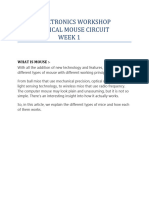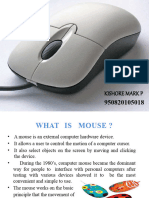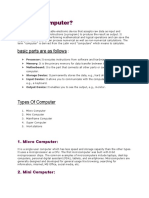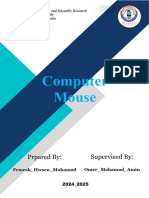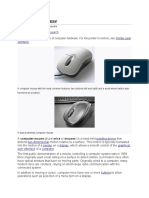0% found this document useful (0 votes)
336 views2 pagesComputer Mouse Project
The document provides an overview of the computer mouse, detailing its history, types, internal components, and working principles. It covers various mouse types including mechanical, optical, wireless, and laser, along with their interfaces and troubleshooting tips. Understanding the mouse's functionality and maintenance is crucial for students in hardware and networking fields.
Uploaded by
anujkashyap8604Copyright
© © All Rights Reserved
We take content rights seriously. If you suspect this is your content, claim it here.
Available Formats
Download as DOCX, PDF, TXT or read online on Scribd
0% found this document useful (0 votes)
336 views2 pagesComputer Mouse Project
The document provides an overview of the computer mouse, detailing its history, types, internal components, and working principles. It covers various mouse types including mechanical, optical, wireless, and laser, along with their interfaces and troubleshooting tips. Understanding the mouse's functionality and maintenance is crucial for students in hardware and networking fields.
Uploaded by
anujkashyap8604Copyright
© © All Rights Reserved
We take content rights seriously. If you suspect this is your content, claim it here.
Available Formats
Download as DOCX, PDF, TXT or read online on Scribd
/ 2












